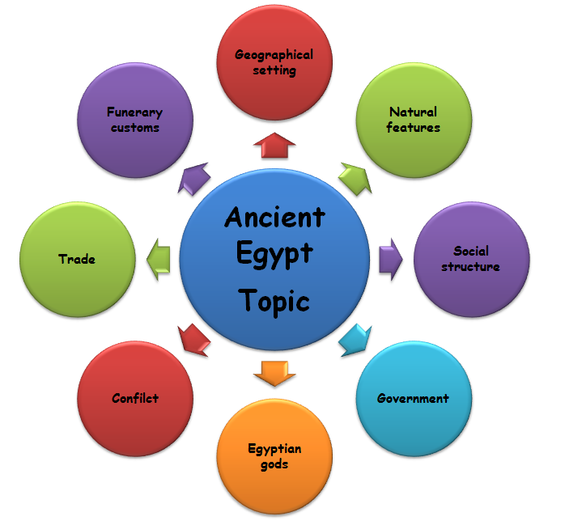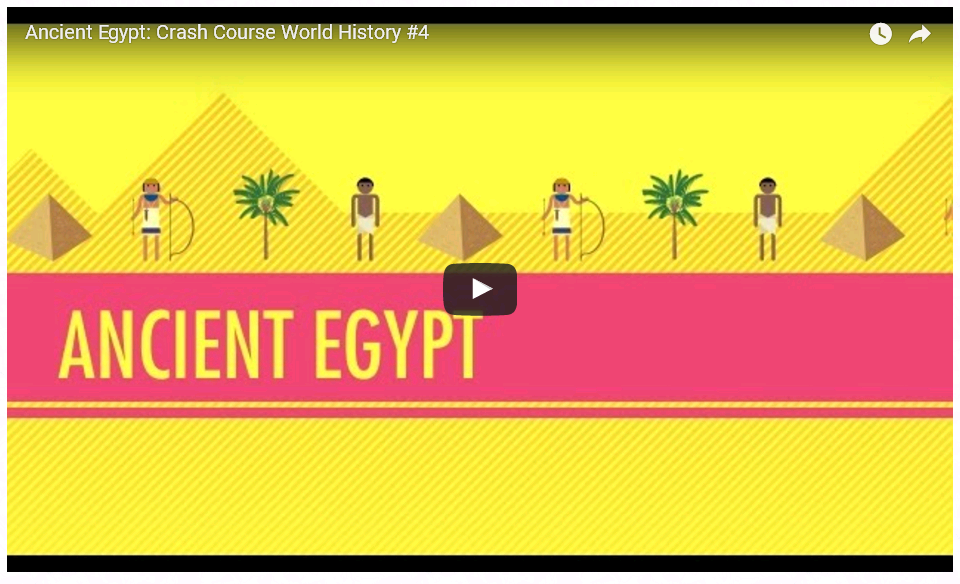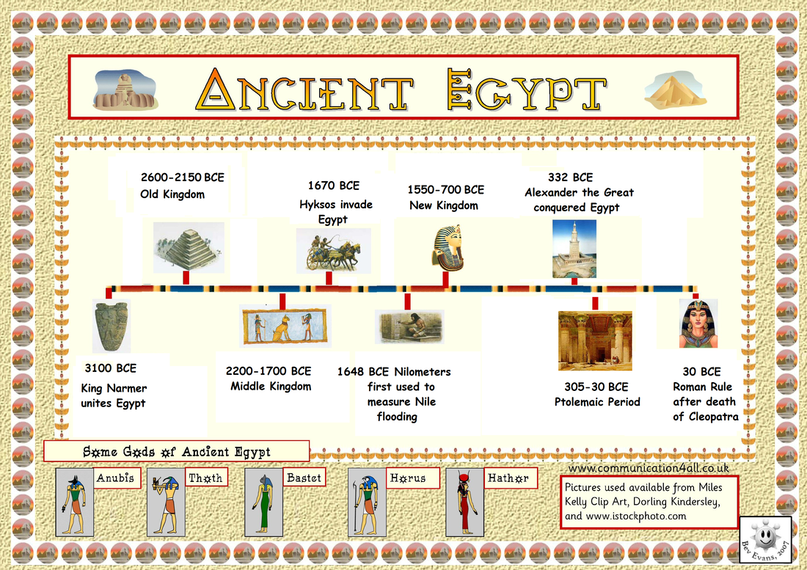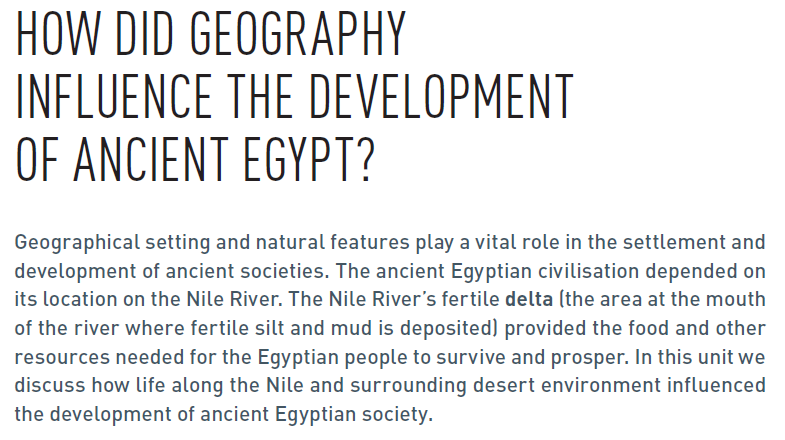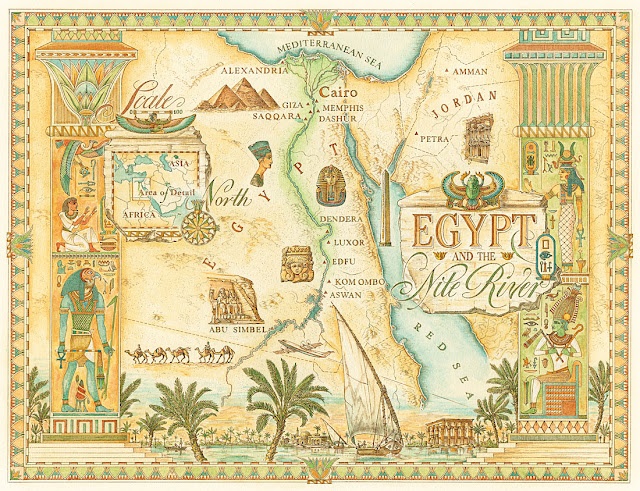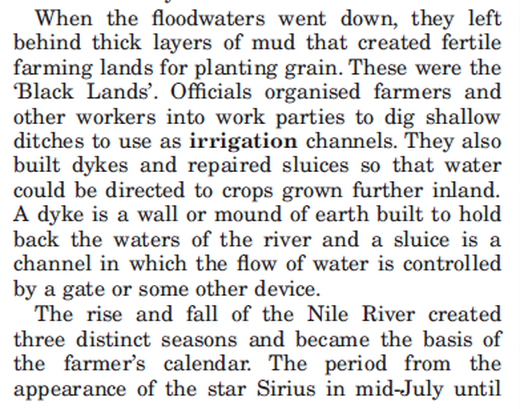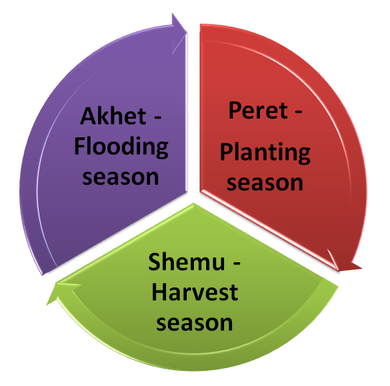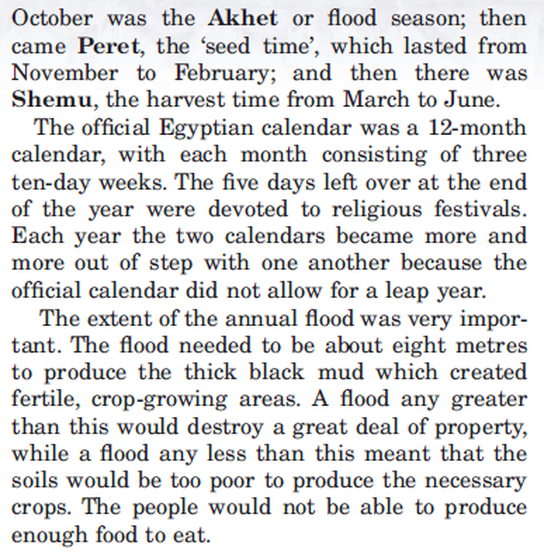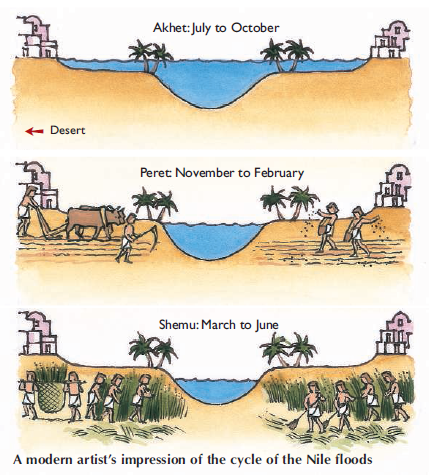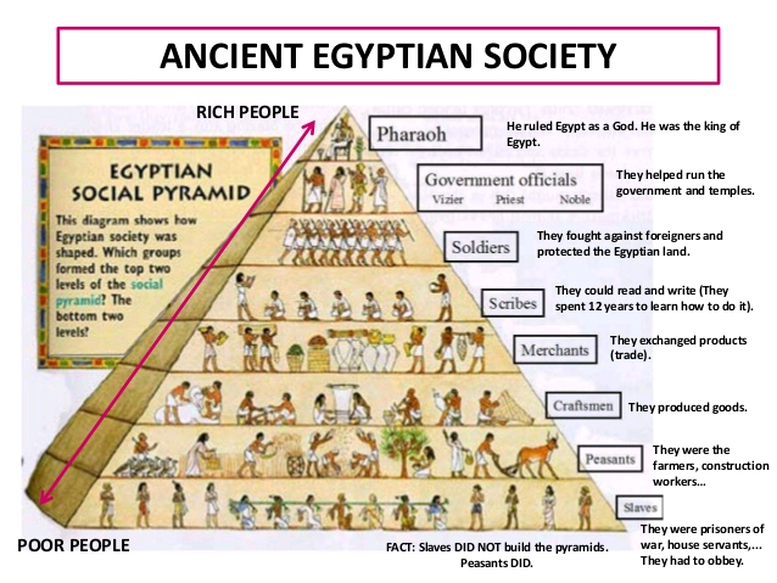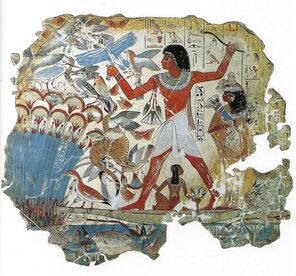Ancient Egypt
Targeted Outcomes
HT 4.2 - describes major periods of historical time and sequences events, people and societies from the past
HT 4.3 - describes and assesses the motives and actions of past individuals and groups in the context of past societies
HT 4.6 - uses evidence from sources to support historical narratives and explanations
HT 4.9 - uses a range of historical terms and concepts when communicating an understanding of the past
HT 4.10 - selects and uses appropriate oral, written, visual and digital forms to communicate about the past
See also
HT 4.2 - describes major periods of historical time and sequences events, people and societies from the past
HT 4.3 - describes and assesses the motives and actions of past individuals and groups in the context of past societies
HT 4.6 - uses evidence from sources to support historical narratives and explanations
HT 4.9 - uses a range of historical terms and concepts when communicating an understanding of the past
HT 4.10 - selects and uses appropriate oral, written, visual and digital forms to communicate about the past
See also
In this topic we will examine:
| ancient_egypt_chapter_ra1.pdf | |
| File Size: | 5710 kb |
| File Type: | |
Watch: Ancient Egypt Introductory Video
Watch: World History -Ancient Egypt
Timeline
The Gift of the Nile
Social Structure
The population of ancient Egypt was divided into groups or classes of people with different jobs and responsibilities to society. The social structure or hierarchy in ancient Egypt was based upon six levels. The social pyramid shown below depicts the levels of each social class in terms of power and importance.
The two top levels, the Pharaoh and Government Officials, were the most powerful and wealthy. At the bottom level was the slaves who served wealthier families. The peasants were were mostly farmers and construction workers. The peasants formed the largest social class in terms of population.
The two top levels, the Pharaoh and Government Officials, were the most powerful and wealthy. At the bottom level was the slaves who served wealthier families. The peasants were were mostly farmers and construction workers. The peasants formed the largest social class in terms of population.
The Pharaoh
The Pharaoh was a god on earth and the ultimate authority in Egypt. It was his/her duty to make the law and maintain order in the Kingdom. The people expected the pharaoh to keep the gods happy so the Nile would flood and there would be a good harvest. S/he had to maintain the army to defend the country from outside threats and internal difficulties.
Government Officials
Government officials consisted of members of the royal family, nobles and priests. The royal family made up the original members of the government, the highest position of which was the vizier.
The VIZIER was the pharaoh’s second-in-command and oversaw the political administration and all official documents had to have his seal on them. The vizier managed the taxation system and monitored the supply of food.
PRIESTS served the gods’ needs and, at times, the power of the High Priest of Amun-Ra rivalled pharaoh’s. Pharaoh appointed the priests during early periods but later the posts became hereditary. They spent their time conducting rituals and ceremonies, in pharaoh’s name, in temples to keep the gods happy.
Nobles were the only group, beside the royal family, who could hold a government office. They ruled the nomes (regions of Egypt), made local laws and maintained order. Nobles also owned farm land which the peasant class worked for them.
Scribes and Soldiers
Scribes were some of the only people in Egypt who could read and write. They kept the records of the country including the amount of food produced and gifts presented to the gods. Scribes also kept records of the number of soldiers in the army and the number of workers on construction sites.
Soldiers protected Egypt from outside attacks and ended social uprisings. At times, they also oversaw the lowest classes when they built the pyramids.
Craftsmen and Merchants
The middle class consisted of craftsmen, merchants and other skilled workers such as doctors. Merchants sold the goods made by craftsmen and doctors treated injuries. Craftsmen or artisans included carpenters, jewellers, metalworkers, painters, potters, sculptors, stone carvers and weavers. Women could work in some of the crafts, such as weaving. Craftsmen often worked in workshops with other artisans of the same type.
Peasants
Peasants were the farmers, servants and constructions workers. The government employed construction workers who built royal buildings like pyramids and palaces. Servants worked in the homes of the higher levels of society cleaning, making food, and completing other tasks.
Farmers were the most important part of the society because they raised the food that fed ancient Egypt. Pharaoh, or the nobles they worked for, provided them with food and clothing. This was an exchange for their cultivation of royal or noble land. Farmers lived in small, mud-brick houses and could rent land in exchange for a percentage of the crops from nobles or the Pharaoh.
Slaves
At the bottom of ancient Egypt's social structure were the slaves. Egypt did not have slave markets. Most of the time, the ancient Egyptians acquired slaves as prisoners-of-war. Slaves worked in the homes of the nobles, in the royal palace and in the temples. They also mined and quarried stone and precious materials. None of the records found to date say that slave labour built the pyramids of Giza, despite myths claiming they did.
The Pharaoh was a god on earth and the ultimate authority in Egypt. It was his/her duty to make the law and maintain order in the Kingdom. The people expected the pharaoh to keep the gods happy so the Nile would flood and there would be a good harvest. S/he had to maintain the army to defend the country from outside threats and internal difficulties.
Government Officials
Government officials consisted of members of the royal family, nobles and priests. The royal family made up the original members of the government, the highest position of which was the vizier.
The VIZIER was the pharaoh’s second-in-command and oversaw the political administration and all official documents had to have his seal on them. The vizier managed the taxation system and monitored the supply of food.
PRIESTS served the gods’ needs and, at times, the power of the High Priest of Amun-Ra rivalled pharaoh’s. Pharaoh appointed the priests during early periods but later the posts became hereditary. They spent their time conducting rituals and ceremonies, in pharaoh’s name, in temples to keep the gods happy.
Nobles were the only group, beside the royal family, who could hold a government office. They ruled the nomes (regions of Egypt), made local laws and maintained order. Nobles also owned farm land which the peasant class worked for them.
Scribes and Soldiers
Scribes were some of the only people in Egypt who could read and write. They kept the records of the country including the amount of food produced and gifts presented to the gods. Scribes also kept records of the number of soldiers in the army and the number of workers on construction sites.
Soldiers protected Egypt from outside attacks and ended social uprisings. At times, they also oversaw the lowest classes when they built the pyramids.
Craftsmen and Merchants
The middle class consisted of craftsmen, merchants and other skilled workers such as doctors. Merchants sold the goods made by craftsmen and doctors treated injuries. Craftsmen or artisans included carpenters, jewellers, metalworkers, painters, potters, sculptors, stone carvers and weavers. Women could work in some of the crafts, such as weaving. Craftsmen often worked in workshops with other artisans of the same type.
Peasants
Peasants were the farmers, servants and constructions workers. The government employed construction workers who built royal buildings like pyramids and palaces. Servants worked in the homes of the higher levels of society cleaning, making food, and completing other tasks.
Farmers were the most important part of the society because they raised the food that fed ancient Egypt. Pharaoh, or the nobles they worked for, provided them with food and clothing. This was an exchange for their cultivation of royal or noble land. Farmers lived in small, mud-brick houses and could rent land in exchange for a percentage of the crops from nobles or the Pharaoh.
Slaves
At the bottom of ancient Egypt's social structure were the slaves. Egypt did not have slave markets. Most of the time, the ancient Egyptians acquired slaves as prisoners-of-war. Slaves worked in the homes of the nobles, in the royal palace and in the temples. They also mined and quarried stone and precious materials. None of the records found to date say that slave labour built the pyramids of Giza, despite myths claiming they did.
The Life of the Scribe Nebamun
|
Nebamun was a middle-ranking official, who’s role was as scribe and grain accountant about 3,300 years ago in ancient Egypt. He worked at the vast temple complex near Thebes, where the state-god Amun was worshipped.
Nebamun’s name is translated as “My Lord is Amun.” His association with the temple, coupled with the importance of grain supplies to Egypt, meant that he was a person of considerable status, though not of the highest rank, in Egyptian society. |
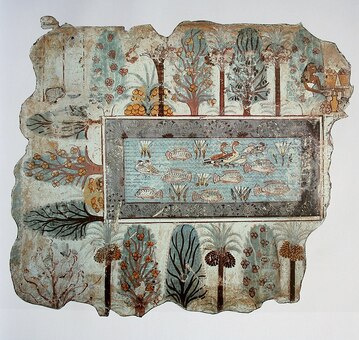 Pond and garden scene: Fragment of wall painting from the tomb of Nebamun. Thebes, Egypt, 1350BC
Pond and garden scene: Fragment of wall painting from the tomb of Nebamun. Thebes, Egypt, 1350BC
The Tomb of Nebamun is the source of some of the most famous surviving ancient Egyptian polychrome tomb-painting scenes. The scene above depicts Nebamun standing on a small boat, fishing and fowling in the marshes of the Nile with fish shown beneath the water-line. His wife stands behind him, portrayed on a smaller scale, and his daughter sits beneath him, holding one of his legs. Nebamun holds a throw-stick in one hand and decoy herons in the other. His cat is shown catching three birds, and many other birds are depicted flying away after being startled from the papyrus-thicket. This Tomb-Painting is one of the most significant paintings from ancient Egypt to have survived.
Nebamun's tomb was located in the Theban Necropolis situated on the west bank of the Nile at Thebes (present-day Luxor), in Egypt. The tomb’s plastered walls were richly decorated with fresco paintings, depicting Nebamun’s life and activities.
Building a tomb chapel was expensive and would have only been done by the wealthy. Most ancient Egyptians would have been buried in simple graves. The wall paintings from Nebamun's tomb chapel show an idealised vision of daily ancient Egyptian life. Nebamun's tomb chapel was a place for people to come and commemorate Nebamun and his wife after his death with prayers and offerings. Nebamun himself was buried somewhere beneath the floor of the innermost room of the tomb chapel in a hidden burial chamber. The beautiful paintings, which decorated the wall, not only showed how Nebamun wanted his life to be remembered but what he wanted his life to be in the afterlife.
Nebamun's tomb was located in the Theban Necropolis situated on the west bank of the Nile at Thebes (present-day Luxor), in Egypt. The tomb’s plastered walls were richly decorated with fresco paintings, depicting Nebamun’s life and activities.
Building a tomb chapel was expensive and would have only been done by the wealthy. Most ancient Egyptians would have been buried in simple graves. The wall paintings from Nebamun's tomb chapel show an idealised vision of daily ancient Egyptian life. Nebamun's tomb chapel was a place for people to come and commemorate Nebamun and his wife after his death with prayers and offerings. Nebamun himself was buried somewhere beneath the floor of the innermost room of the tomb chapel in a hidden burial chamber. The beautiful paintings, which decorated the wall, not only showed how Nebamun wanted his life to be remembered but what he wanted his life to be in the afterlife.
